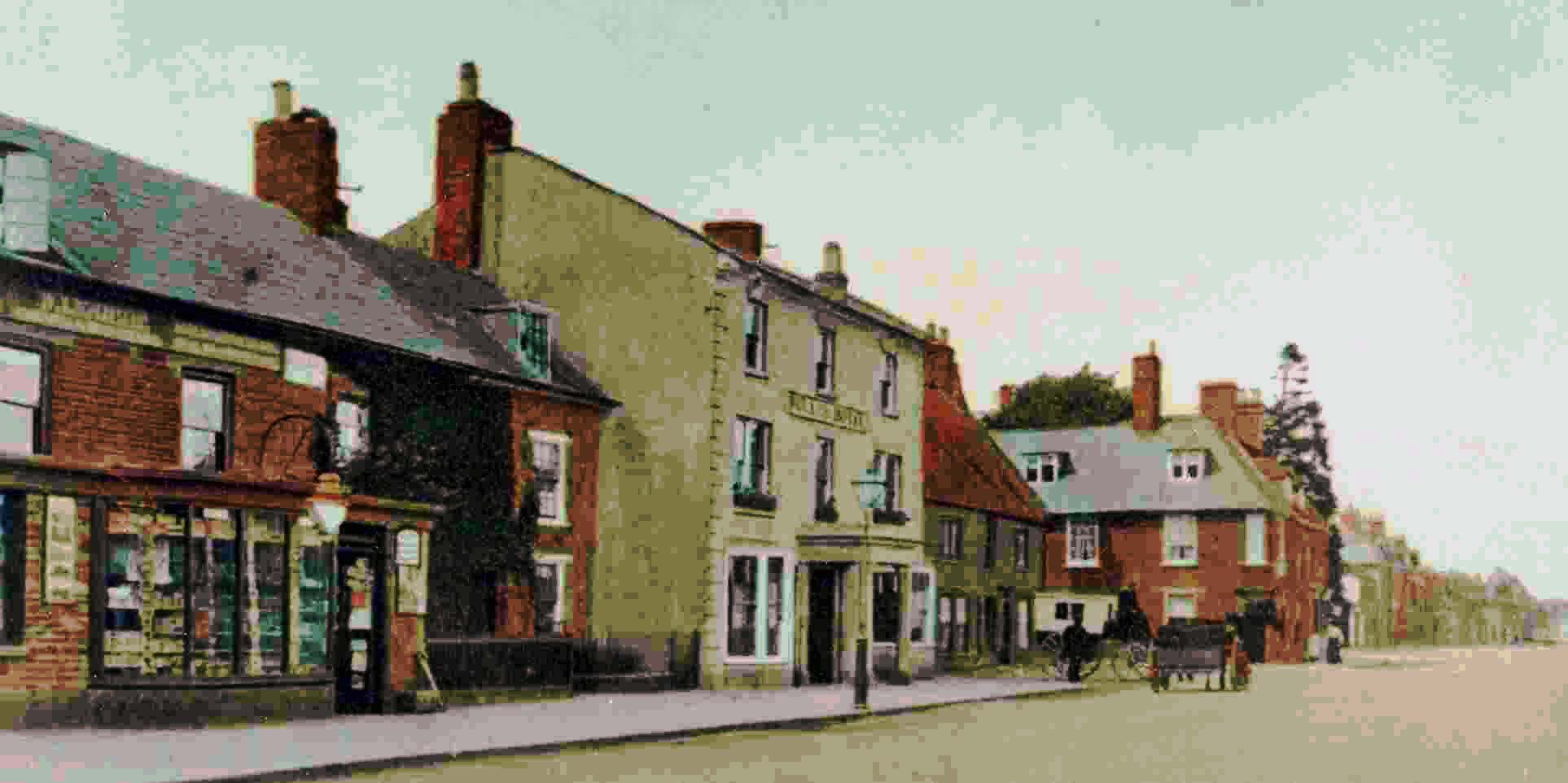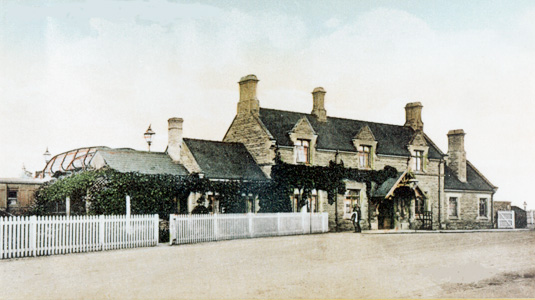
An abridged version of Ivor Neale’s article ‘A view from Olney’ written in 2004 when he was approaching his 90th year.
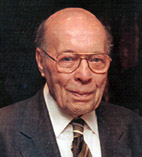
My first experience of the Northampton – Olney – Bedford railway was in March 1930 when our family came to live in Olney. On our journey from Cornwall it was necessary to change stations at London and then trains at Bedford for Olney. This twin track branch line linked the LMS main line out of Euston to Birmingham, Manchester and Scotland, with the LMS main line out of St Pancras going to Nottingham, Derby, and Sheffield.
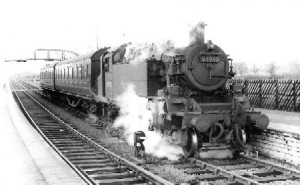
Passenger trains ran at about two-hourly intervals from Olney to Northampton and from Olney to Bedford on weekdays and Saturdays. There never was a Sunday service. This frequency of passenger services was maintained from the 1930’s until the line was closed in 1962. In the 1930’s, people used the trains as they were cheap, comfortable and ran at convenient times, particularly for Northampton.
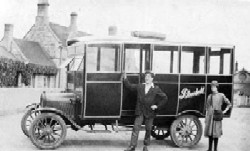
Most men worked on Saturday mornings so many Olney people would travel by train in the afternoon to go shopping, or to see Northampton Saints or Cobblers play. People also travelled by train to visit the cinemas or the theatres. On Saturday evenings a train left Olney for Northampton at 5.15 pm and arrived back at 9.45 pm. In those days the fare was about 1/6d (7½ p).
Olney station was very attractive. The main building was constructed of stone and had a large entrance porch. It also had a large forecourt, presumably to allow, in earlier times, the horse-drawn carriages to manoeuvre. Like most small stations, the station master at Olney lived in rooms at one end of the building, which made a suitable home for a small family. In the 1930’s the Station-master was Mr Slater. A door connected his rooms with the booking office. A clerk sold tickets through a very small ‘pigeon hole’ window into the booking hall. Pre-printed tickets were kept in a large rack under the names of the stations that passengers were most likely to request.

The station was lit by gas, with chains to switch the lights on and off. In the winter the waiting room often had a good coal fire going as there was never a shortage of coal around the station. All manner of small goods, such as day-old chicks in boxes and racing pigeons in baskets, were kept in the waiting room. The telegraph bell ‘rang in’ about five minutes before the passenger train arrived, so people knew if the train was on time.
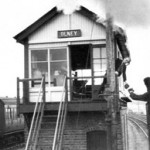
The signal-box was located about half way between the station and the river, where several sidings linked up to the goods yard. At one time, the signal-box was manned twenty four hours a day, and so employed a number of men working shifts. In the 1950’s, school visits were made to the station and signal-box showing the children how the railway worked. Around this time the station master was Frank Robinson with Lois Sargent in the Booking Office. Hubert (Ding-Dong) Clark and (later) Cliff Grimes manned the station; Bert Fraser and George Taylor were two of the staff manning the signal-box.
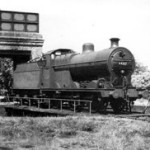
A turntable that could accommodate the large engines that pulled the goods trains was sited near to the signal box. It was operated by one man turning a handle to reverse the direction of the engine. A large tank on top of a brick tower stood near the turntable and supplied water for the engines. A number of allotments were provided for railway workers on the south side of the signal-box.
I remember during one night in 1930 or 1931, a goods train going up the same incline suffered a broken coupling, resulting in a number of trucks running back towards the station. Gaining speed as they went, they eventually crashed down the embankment from the station yard into a field near the river, quite a pile up! In those days each train had a guard’s van but I don’t remember what happened to the guard. In another accident in the 1950’s, an engine finished up down the embankment close to the river. Olney station was obviously not without the odd incident.
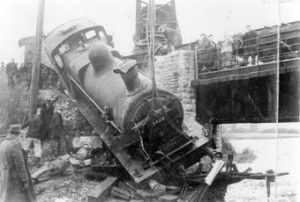
Moving up the line about three miles towards Northampton, a single-track railway line branched off to Towcester at Ravenstone Junction. This line was the last section of the Stratford-upon-Avon, Towcester & Midland Junction Railway and opened in 1891. Although its regular passenger traffic operations were short lived, the railway did provide a cross-country link for goods traffic. The only passenger train to use this line in the 1930’s and 40’s was an excursion train that ran on Easter Monday from Luton to Towcester Races. The fare from Olney in the 1930’s was 1/6d return (7½ p). In 1932 I went on this excursion train, just out of curiosity. It was a pleasant journey through the countryside at about 20 mph, arriving at Towcester in good time for the races. The station at Towcester was a good walk from the racecourse, perhaps a mile. The good weather made this outing very enjoyable.
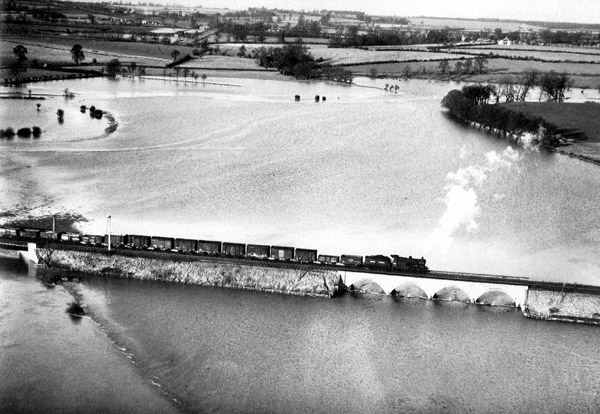
Travelling by train from Olney to Bedford, passengers were expected to cross the line to the other platform using the footbridge. Most ‘locals’ took the quicker and more dangerous route crossing the line at the north end of the platform used by parcel trolleys. The design of the footbridge was unusual, only a few were built with such an attractive lattice pattern.
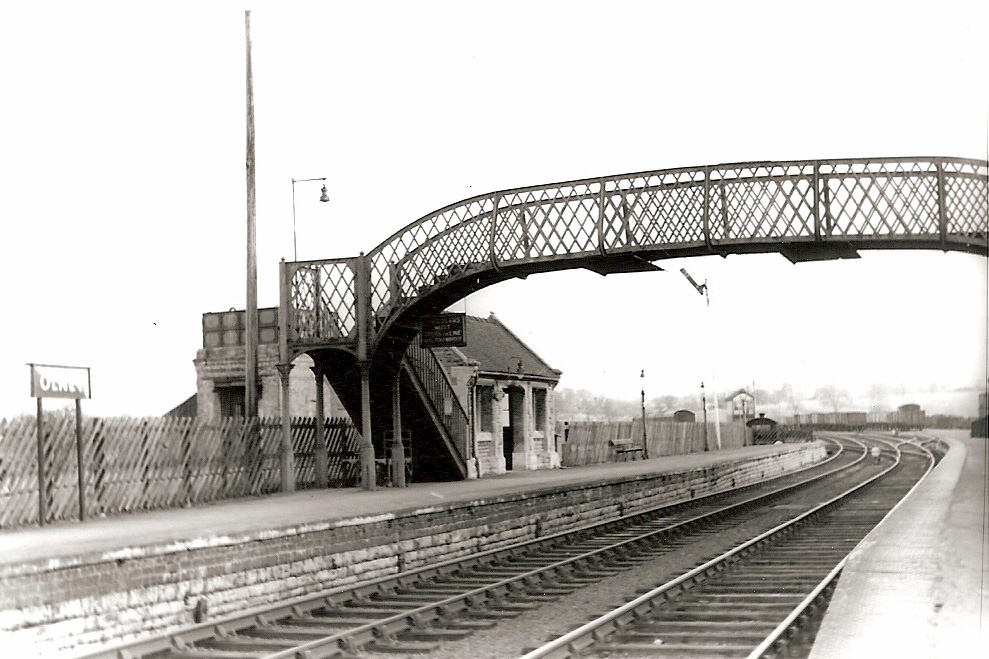
Beyond the south end of the station sidings, the trains first crossed a beautiful iron bridge over the River Ouse and then a limestone viaduct over the flood plain, before the start of the incline towards Clifton Reynes. These bridges were used by Olney people as an unofficial footpath to Clifton Reynes, even though they were under threat of prosecution by the Railways Board (so the notice said!). This route was a very convenient short cut and indeed was very popular on Sunday evenings in the summer Family walks on Sunday afternoons and evenings were popular in those days.

The passenger trains continued to operate throughout the 1940’s and 1950’s, but with motoring becoming more affordable, their use declined considerably. The journey from Olney to Northampton took 19 minutes and cost 2/11d return, about 14½ p, pretty good value even in 1961.

It was more than a little sad to see the steam engines replaced by diesel, but at least it looked as if events were going in the right direction. However, Dr Beeching came on the scene. He was famous for being paid a fabulous salary at that time, £24,000 a year, to put British Rail on a profitable footing. The Northampton to Bedford branch line was planned for closure and Olney suffered accordingly. The last regular passenger train passed through Olney in March 1962.
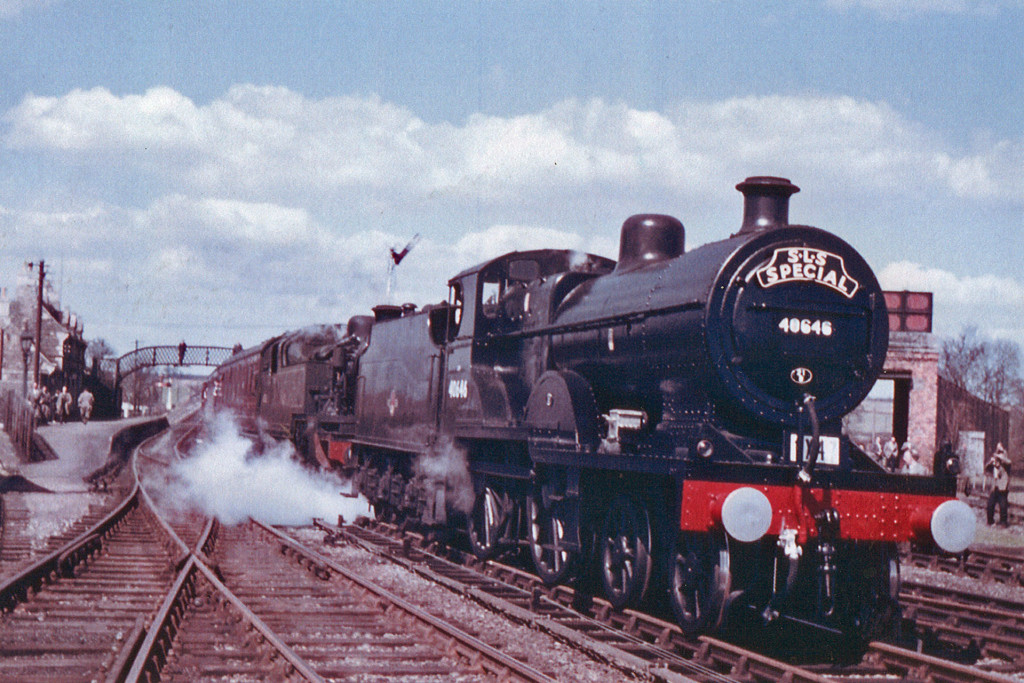
Soon after, one track was taken up and the other carried a few goods trains until about 1965, when the railway traffic through Olney was no more. Eventually the lines were taken up and the bridges removed.
Suggested link to Ivor Neale’s extensive article with more images
Also to a popular Youtube video based on his article
